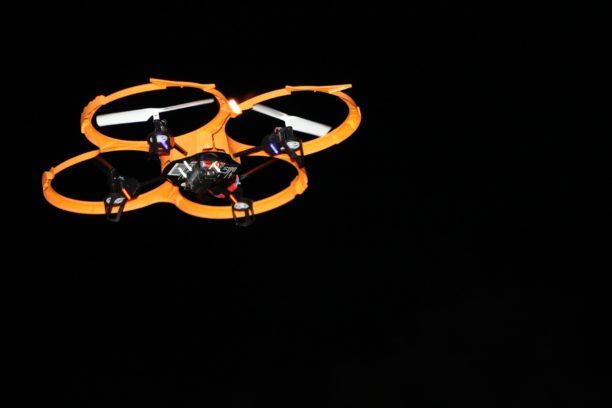Chao said that the time was right to move forward on 3 new DOT initiatives for drone integration. “Drones…are well on their way to mainstream deployment,” said Chao.
The first initiative is a proposed new rule (NPRM, or Notice of Proposed Rulemaking) to allow drone to fly at night and over people without waivers, if the operator meets conditions including appropriate training, approved testing, and anti-collision lighting on the drone. Currently, night waivers are the most commonly granted waiver for commercial operators, allowing thermal inspection work or other work over commercial buildings when there are fewer employees present.
The proposal “would allow drones to make routine flights over people without a waiver or an exemption under certain conditions,” said Chao.
Below is a link to the text of the NPRM, which Chao said would be listed in the Federal Register “as soon as possible.” The comment period is open for 60 days after publication.
DRAFT NPRM–Operation of Small Unmanned Aircraft Systems over People (PDF )
The second initiative that Chao announced deales with safety and security: and Chao obliquely referenced the recent events at U.K. airports in her introduction: “Let us note that the Department is keenly aware that there are legitimate public concerns about drones, concerning safety, security and privacy,” said Chao. “Recent events overseas have underscored concerns about the potential for drones to disrupt aviation and the national airspace. So along with this new proposed rule, the Department is finishing up two other proposals to address drone safety and national security.”
While not receiving as much play in the general media, this is a document that concerned commercial pilots should review carefully, as it asks for comment about issues such as the appropriate stand off distance (distance between a drone and the nearest person) and other limitations to performance or operations of drones that might be appropriate for safety and security reasons. When the notice is published to the Federal Register, comments will be open for 60 days.
DRAFT ANPRM–Safe and Secure Operations of Small Unmanned Aircraft Systems (PDF )
The “UAS Safe and Secure ANPRM,” said Chao, “identifies major drone safety and security issues that may pose a threat to other aircraft, to people on the ground or to national security. It solicits for consideration recommendations to reduce these risks as drones are integrated into our national airspace.”
Finally, Chao announced 3 new contracts awarded for further Unmanned Traffic Management (UTM) research.
“The pilot project, through September 2019, is intended to develop and demonstrate a traffic management system to safely integrate drone flights within the nation’s airspace system. Also, the pilot project will create a shared information network and gather data that can be used for future rulemakings,” said Chao.
“Through a stringent application and evaluation process, the following providers were selected based on the strength of industry partnership, the maturity of the technology offered, and overall cost: Nevada UAS Test Site Smart Silver State; Northern Plains Unmanned Aircraft Systems Test Site; and, Virginia Tech Mid-Atlantic Aviation Partnership.”
“Together, these three initiatives will be a major step forward in enabling the safe development, testing and deployment of drones in our country,” said Chao.
